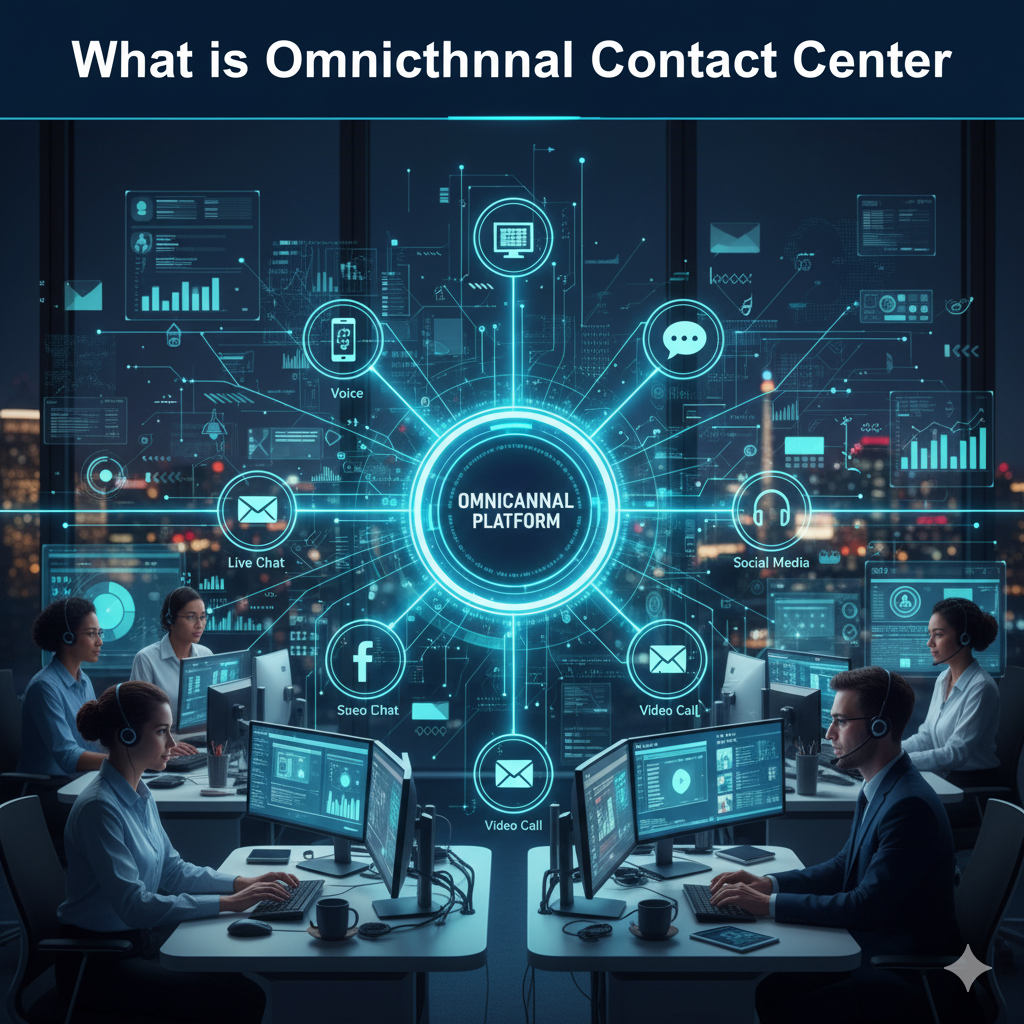Physical Address
304 North Cardinal St.
Dorchester Center, MA 02124
Physical Address
304 North Cardinal St.
Dorchester Center, MA 02124

In today’s digital-first world, customers expect seamless communication with businesses across multiple platforms. Whether it’s phone, email, live chat, social media, or messaging apps, they demand consistency, speed, and personalization. This is where the omnichannel contact center comes in.
Unlike traditional single-channel or even multichannel models, omnichannel contact centers unify every customer interaction into one integrated platform. This enables businesses to deliver consistent, personalized, and efficient support, enhancing customer experience and long-term loyalty.
This article provides a detailed guide to omnichannel contact centers, covering their importance, benefits, challenges, implementation strategies, and best practices.
An omnichannel contact center is a centralized platform that integrates multiple support channels—such as voice, email, chat, SMS, and social media—into a single interface.
This integration allows agents to seamlessly switch between channels, track customer history, and maintain continuity in communication. Customers no longer need to repeat themselves when moving from one channel to another.
Key features include:
Many businesses confuse multichannel with omnichannel, but the difference is crucial.
| Aspect | Multichannel Contact Center | Omnichannel Contact Center |
|---|---|---|
| Integration | Channels operate separately | All channels are interconnected |
| Customer Experience | Customers repeat information on each channel | Seamless journey across channels |
| Agent Productivity | Limited visibility of customer history | Unified view of interactions |
| Personalization | Generic responses | Personalized, data-driven engagement |
In short: Multichannel provides options, but omnichannel ensures consistency and continuity.
Customer expectations are evolving. According to Salesforce, 76% of customers expect consistent interactions across departments, while 71% expect personalized engagement.
Example: A customer who starts a conversation on live chat and later switches to phone support should not need to repeat their issue. With omnichannel, the agent already has the full context.
To function effectively, omnichannel centers rely on several technology and process enablers:
An effective omnichannel system covers multiple support channels, including:
While omnichannel offers significant advantages, businesses face several outsourcing challenges and risks:
Map out customer touchpoints and identify which channels matter most.
Select contact center software that integrates seamlessly with your CRM and existing tools.
Ensure agents are skilled in cross-channel communication and customer engagement.
Examples include:
Regularly review reports, customer feedback, and analytics to refine the system.
A global retail brand implemented an omnichannel contact center integrating phone, chat, and social media. The results:
It is a platform that integrates multiple communication channels, ensuring a seamless customer experience across phone, email, chat, social media, and more.
It provides continuity, personalization, and efficiency, so customers don’t need to repeat themselves when switching channels.
Yes. While multichannel offers many options, omnichannel ensures integration and consistency across them.
CRM systems, AI-powered chatbots, workforce management software, and cloud-based contact center platforms.
Yes. Cloud-based contact center software makes it affordable and scalable, even for SMEs.
The omnichannel contact center is not just a trend—it is a necessity in modern business. By integrating multiple communication channels, companies can deliver seamless, personalized, and efficient customer experiences that drive loyalty and growth.
Final Statement:
In today’s competitive market, customers demand more than availability—they expect consistency. Businesses that adopt omnichannel contact centers will not only meet these expectations but also gain a decisive edge in customer engagement.